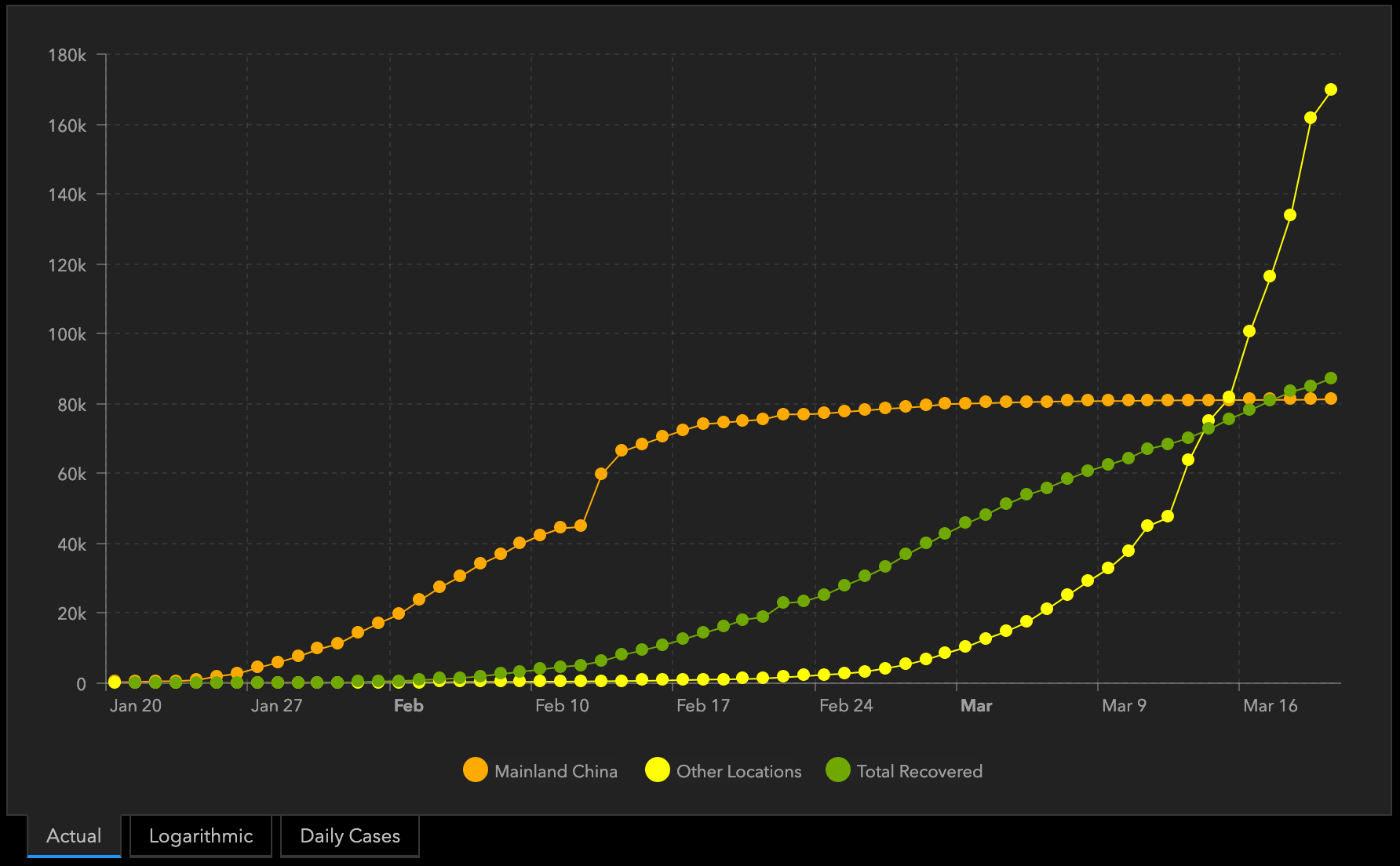Edit: This post didn’t age well. While excellent covid tracking software solutions that preserved privacy were developed. Their adoption was absolutely dismal because of privacy concerns.
How ironic that folks happily used Facebook, Google and friends while maligning the invasion of privacy that covid tracking solutions represented.
Rereading this post during the 4 or 5th wave of the pandemic has me wondering what would have happened if our culture was capable of a more proactive approach.
In our race to slow down the coronavirus, we are deploying mitigation strategies. Strategies that will slow down the rate of infection, not necessarily the total number of infections. This is intended to buy us time and allow us to prepare our medical systems to handle this emergency.
Suppression of the virus is a more pro-active stance where we test absolutely everyone and actively move to reduce the number of new infections as they did in China which just yesterday reported 0 new cases. It’s important to note, we can trust the accuracy of that number because of how China has pro-actively increased testing data-flow to create a very complete picture of how the virus is progressing.

What can the software industry do to help us suppress COVID-19? Create software to actively track virus relevant data about members of a community, town, business, and/or country. Having this data would allow us to be more surgical with our social distancing orders.
A rudimentary version of this software could be deployed right now in a community to increase confidence that it’s OK to go to the store and perhaps eat at the cafe.
The rudimentary software could take the form of requiring everyone in the community to self report their body temperature every morning and evening. This simple data-stream alone would provide extremely important actionable information. How to act on that information would need to depend on crunching the numbers to learn the cost benefit of any given public activity. Communities and governments can then create guidelines or emergency orders based on a much more sophisticated view of the situation.
Simple temperature tracking software like this can possibly give communities a bit more room to keep functioning while staying vigilant.
There is absolutely no reason to keep this software simple, we live in a world of technological and data abundance. We can combine body temperature, location, medical test results and social graph data-streams into a powerful weapon against COVID-19.
In an ideal situation, as soon as someone shows symptoms, we can respond instantly and raise an alert on the phone of everyone they may have been close to with over the last 24 hours to let them know that they have may been exposed and that they need to stay home and self-monitor or head to the nearest testing facility.
There are compliance issues, where people will report false temperatures, but there are always compliance issues and we will have to bake this into our risk calculations.
These data-streams would be extremely invasive but the benefit outweighs the cost by a large margin. These tracking measures would have to be dropped at the end of a pandemic when a vaccine has been distributed.
The possibilities for applications that consume this information are endless:
- A simple app on your phone could display your status as green yellow or red, allowing vendors to make informed decisions
- A viral weather application to let you know the risk today in your location
- complex data analysis that draws borders around communities and takes the rate of movement between communities into consideration
- gives you are a rating for the risk in the store you are about to enter
- emergency order that everyone in any bar, restaurant, gym setting have a certain level of compliance
- Apple watch like devices are a perfect fit for this, but we could manufacture small inexpensive wrist band devices that track body temperature and location
Big tech (Facebook, Google, Twitter, Apple) can easily create solutions in this space in a very short timeline. (They can and should share data on an established protocol.)
There is a potential downside of folks getting this data coming to the wrong conclusions. It is apparently very easy even for our leaders to see low numbers and come to the wrong risk assesment. Any guidelines that come out of the increased data-flow created by suppression software should be modeled and carefully deployed. This is no place for guesswork.
I think it’s essential to move toward an information rich decision making environment that might allow society to function well even in midst of such a tremendous global challenge.